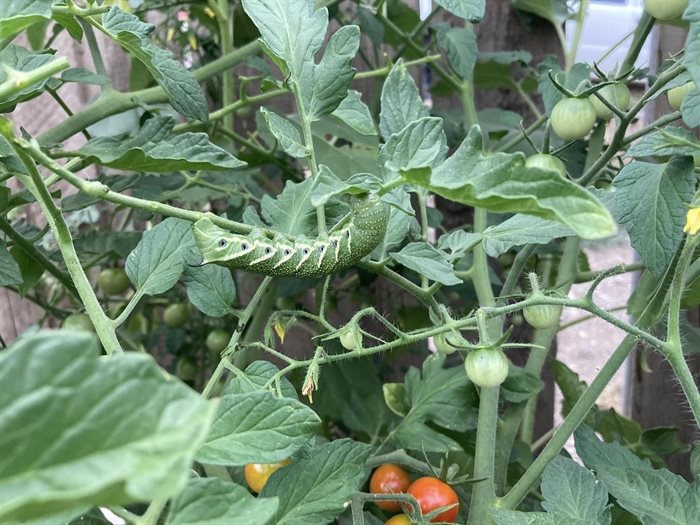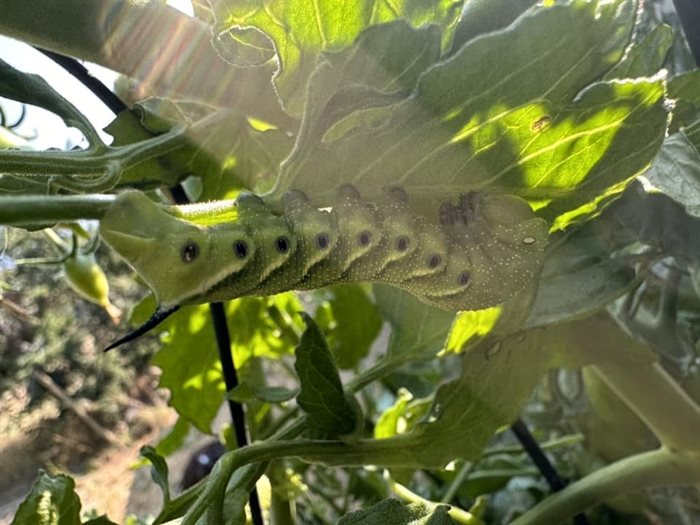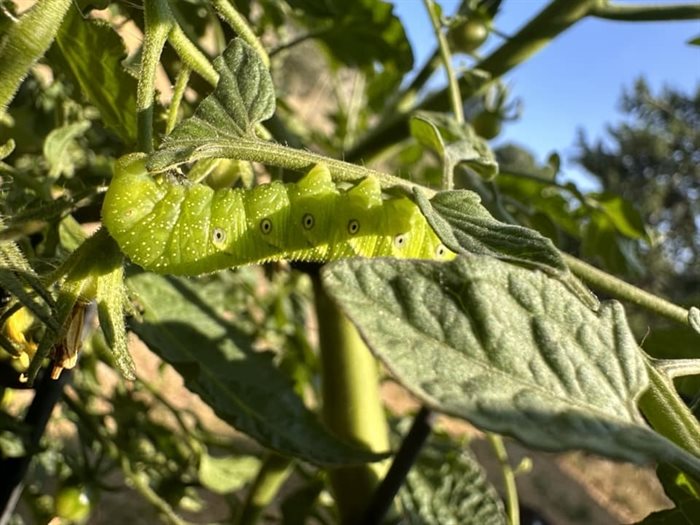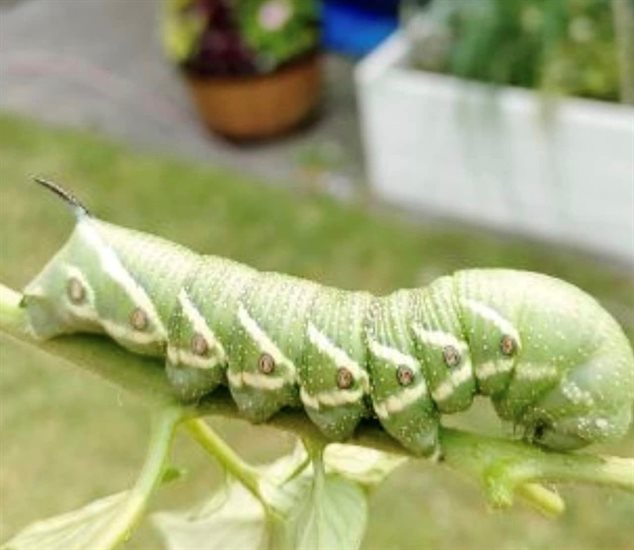iN PHOTOS: Tomato hornworms munching on gardens in Kamloops, Okanagan
Sara Ludtke went to pick some tomatoes from her Kamloops garden late in the evening earlier this week and she noticed some droppings on a leaf.
Upon a closer inspection she discovered something had been eating her plants. She said she saw a “huge worm” and was “completely freaked out.”
“It was at least five inches long, I was shocked at how huge it was, I’d never seen one before,” Ludtke said.
Other residents in Kamloops and the Okanagan have been reporting similar findings this past week.
The hungry, horned culprits are caterpillars called tomato hornworms are a common garden pest that can damage crops.
Found in most regions of North America, the caterpillars also munch on eggplants, peppers, and potatoes, according to The Old Farmers Almanac. They blend in easily and feed non-stop.
Easy to identify, tomato hornworms can be up to five inches long, are pale green with eight white and black V-shaped stripes, and have a black horn-like protrusion sticking out of their back ends. They are similar in appearance to tobacco hornworms that also munch on gardens in North America, but tobacco hornworms have parallel white strips and red horns.
READ MORE: BEETLE INVASION: Elm seed bugs making a nuisance of themselves in Okanagan, Kamloops
The caterpillars don’t bite and don’t sting, they use their horns as a defense mechanism they wave at predators when they’re threatened. They can be handpicked from plants and either squished or fed to birds, or dropped into a soapy bucket of water.
Adult tomato hornworm moths, called hummingbird moths, lay eggs on the underside of leaves in late spring and the caterpillars hatch a week later. They’ll feed for roughly five weeks before making cocoons in the soil where they’ll spend the winter and emerge as moths the following spring.
READ MORE: BC dairy farmer fined $195,000 for selling raw milk
“I keep going and checking twice daily but haven’t found anymore,” Ludtke said. “The black horn on their rear ends just makes them even creepier.”
Go here to identify a tomato hornworm and for prevention techniques.
To contact a reporter for this story, email Shannon Ainslie or call 250-819-6089 or email the editor. You can also submit photos, videos or news tips to the newsroom and be entered to win a monthly prize draw.
We welcome your comments and opinions on our stories but play nice. We won't censor or delete comments unless they contain off-topic statements or links, unnecessary vulgarity, false facts, spam or obviously fake profiles. If you have any concerns about what you see in comments, email the editor in the link above. SUBSCRIBE to our awesome newsletter here.








